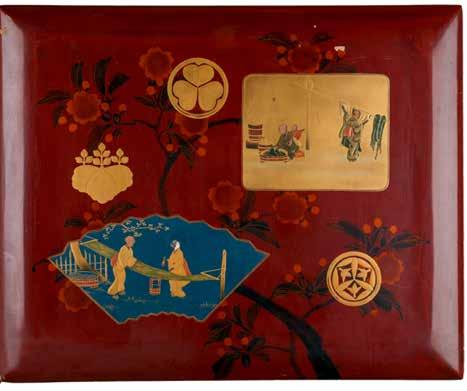Heroes, villains and the destruction of beauty in The Tale of the Heike
Russell Kelty
The Tale of the Heike is the great war epic of Japanese literature and for centuries has pervaded art, literature, drama and pop culture.1 The Tale dramatically describes the historical events of the disastrous Genpei wars (1180–85), which ‘convulsed twelfth century Japan and left indelible cultural memories’.2 The thirteen books, or loosely connected chapters, describe the precipitous fall of the Taira (Heike), one of the most powerful clans in the late Heian period (794–1185), at the hands of the Minamoto (Genji). The prophetic opening lines evoke the Buddhist themes of impermanence (mujō) and karmic retribution, which were felt acutely in the tempestuous atmosphere of the fourteenth century, when it was compiled: The Jetavana Temple bells, ring the passing of all things. Twinned sal trees, white in full flower declare the great man’s certain fall.3
These lines foretell the demise of the main protagonist, Taira no Kiyomori (1118–1181), the powerful and influential head of the Heike clan, who was descended from the elegant courtiers and great poets of Kyoto (fig. 1). As a prominent historical figure, Kiyomori is described in other tales of the period as cowardly and foolish, but in The Tale of the Heike he is transformed into an arch-villain, becoming the archetype for all future villains. His ruthless acts transgressed the boundaries of honourable conduct, ultimately leading to his demise, wracked by disease and fever. The destruction of the Taira at the hands of the Minamoto led to the establishment of the first military government (bakufu) at Kamakura and the appointment of the first shogun by the emperor, Minamoto no Yoritomo (1147–1199), a prominent figure in The Tale. By the early fourteenth century The Tale had been transcribed from oral accounts and survived in two streams: texts to be read, and texts to be memorised and performed by blind monks, accompanying themselves on the biwa. Under the authority of the Ashikaga shogunate, the guild of the ‘lute priests’ (biwa hoshi) was regularly summoned to the palace for new year rituals for upper class samurai. Itinerant singers transmitted the war tales orally, spreading stories of warriors’ loyalty, courage and virtue throughout the country. The peace and prosperity of the Edo period saw a flourishing of the arts. The most dramatic moments and iconic figures of The Tale of the Heike were codified and became the subject of a range of media to suit all levels of society, and included illustrations on sliding doors, handscrolls, album leaves, woodblock prints and commentaries (rufubon), 8
fig. 1: Japan, Taira no Kanemori (died 991), one of the thirty-six immortals of poetry, 19th century, Japan, woodblock print; ink and pigment on paper, 34.5 x 25.5 cm (sheet); Gift of Brian and Barbara Crisp in memory of their son Andrew through the Art Gallery of South Australia Foundation 2006 1 Royall Tyler (trans.), The tale of the Heike, Viking Penguin, London, 2012, p. xxi. 2 Tyler, p. xxi. 3 Tyler, p. 3.

















